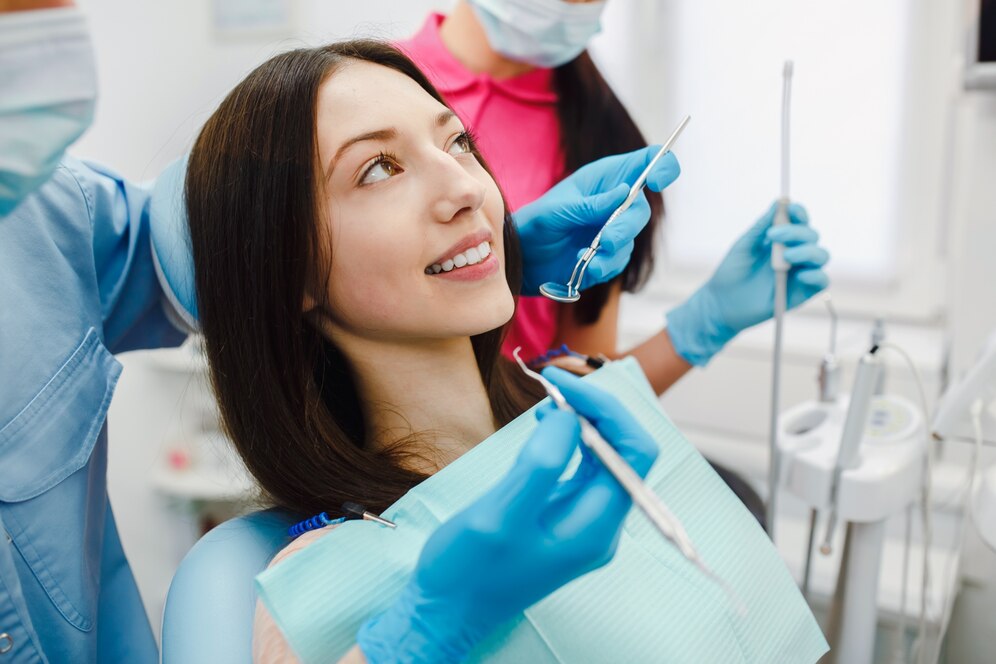
Ever glanced at the mirror and wished for a brighter, whiter smile? You’re not alone! Teeth whitening has become one of the most sought-after cosmetic dental procedures. But what exactly is teeth whitening, and why are so many people eager to achieve that dazzling white smile?
What is Teeth Whitening?
Teeth whitening is a cosmetic dental process that lightens the color of your teeth. It removes stains and discoloration, providing a brighter, more appealing appearance. This procedure can be performed professionally by a dentist or at home using various products.
Why Do People Want Whiter Teeth?
A white smile is often associated with good health and beauty. It boosts self-esteem, enhances first impressions, and can even make you look younger. Who wouldn’t want that?
Understanding Tooth Discoloration
Before diving into the methods of teeth whitening, it’s essential to understand why our teeth get discolored in the first place.
Causes of Tooth Discoloration
Tooth discoloration can result from multiple factors, including:
- Diet: Consuming coffee, tea, red wine, and certain fruits can stain your teeth.
- Tobacco Use: Smoking or chewing tobacco leads to yellow or brown stains.
- Poor Dental Hygiene: Inadequate brushing and flossing can lead to plaque buildup and staining.
- Aging: As you age, the outer layer of enamel wears down, revealing the yellowish dentin beneath.
- Medications: Certain medications can cause tooth discoloration as a side effect.
Types of Tooth Stains
There are two main types of tooth stains:
- Extrinsic Stains: These are surface stains caused by external factors like food, drinks, and smoking. They affect the outer layer of the tooth (enamel).
- Intrinsic Stains: These stains are deeper and occur within the tooth. They can be due to aging, trauma, or exposure to certain chemicals or medications.
Teeth Whitening Methods
With various options available, choosing the right teeth whitening method can be overwhelming. Let’s break down the most popular methods.
Professional Teeth Whitening
In-Office Whitening
In-office whitening is performed by a dentist and typically involves using a high-concentration bleaching agent. It’s the quickest and most effective method, often yielding results in just one visit.
At-Home Whitening Kits
Dentists can also provide at-home whitening kits with custom-fitted trays and professional-grade whitening gel. This method takes longer than in-office whitening but can be just as effective.
Over-the-Counter Whitening Products
For those who prefer a more convenient option, over-the-counter whitening products are widely available.
Whitening Toothpaste
Whitening toothpaste contains mild abrasives that help remove surface stains. However, they are not as effective for deeper stains.
Whitening Strips
Whitening strips are thin, flexible plastic strips coated with a peroxide-based whitening gel. They are applied directly to the teeth and worn for a specific period, usually 30 minutes.
Whitening Gels and Trays
These products include a gel that is applied to the teeth using a tray. They are typically more effective than toothpaste and strips but may still take a few weeks to show results.
Natural Teeth Whitening Remedies
If you prefer a more natural approach, there are several home remedies you can try.
Baking Soda
Baking soda is a mild abrasive that can help remove surface stains. Mix it with water to form a paste and brush your teeth with it a few times a week.
Hydrogen Peroxide
Hydrogen peroxide is a bleaching agent that can whiten teeth. It can be used as a mouthwash or mixed with baking soda to create a whitening paste.
Activated Charcoal
Activated charcoal is another popular natural remedy. It binds to toxins and stains, helping to remove them from your teeth. Be cautious, as it can be abrasive.
Benefits of Teeth Whitening
Teeth whitening offers several benefits beyond just a brighter smile.
Boost in Confidence
A white smile can significantly boost your confidence, making you feel more comfortable in social situations.
Improved Appearance
Whiter teeth can enhance your overall appearance, giving you a more youthful and vibrant look.
Enhanced Oral Health
While primarily cosmetic, teeth whitening can also encourage better oral hygiene habits. People who whiten their teeth often take better care of them to maintain the results.
Potential Risks and Side Effects
As with any cosmetic procedure, teeth whitening has potential risks and side effects.
Tooth Sensitivity
Whitening treatments can cause temporary tooth sensitivity, especially with high-concentration bleaching agents.
Gum Irritation
Some whitening products can irritate the gums, causing redness and discomfort.
Enamel Damage
Overuse of whitening products can lead to enamel damage, making teeth more susceptible to decay and sensitivity.
How to Maintain Your White Smile
After investing time and money in teeth whitening, you’ll want to keep your smile bright for as long as possible.
Good Oral Hygiene Practices
Brush your teeth at least twice a day and floss daily to remove plaque and prevent stains.
Diet and Lifestyle Tips
Avoid foods and drinks that can stain your teeth, such as coffee, tea, red wine, and berries. If you do consume them, rinse your mouth with water afterward.
Regular Dental Check-Ups
Visit your dentist regularly for cleanings and check-ups to maintain your oral health and whiteness of your teeth.
Conclusion
Teeth whitening is a fantastic way to enhance your smile and boost your confidence. Whether you choose professional treatment or an at-home solution, understanding the causes of discoloration and the methods available will help you achieve the best results. Remember to maintain good oral hygiene and make wise dietary choices to keep your smile bright and beautiful



